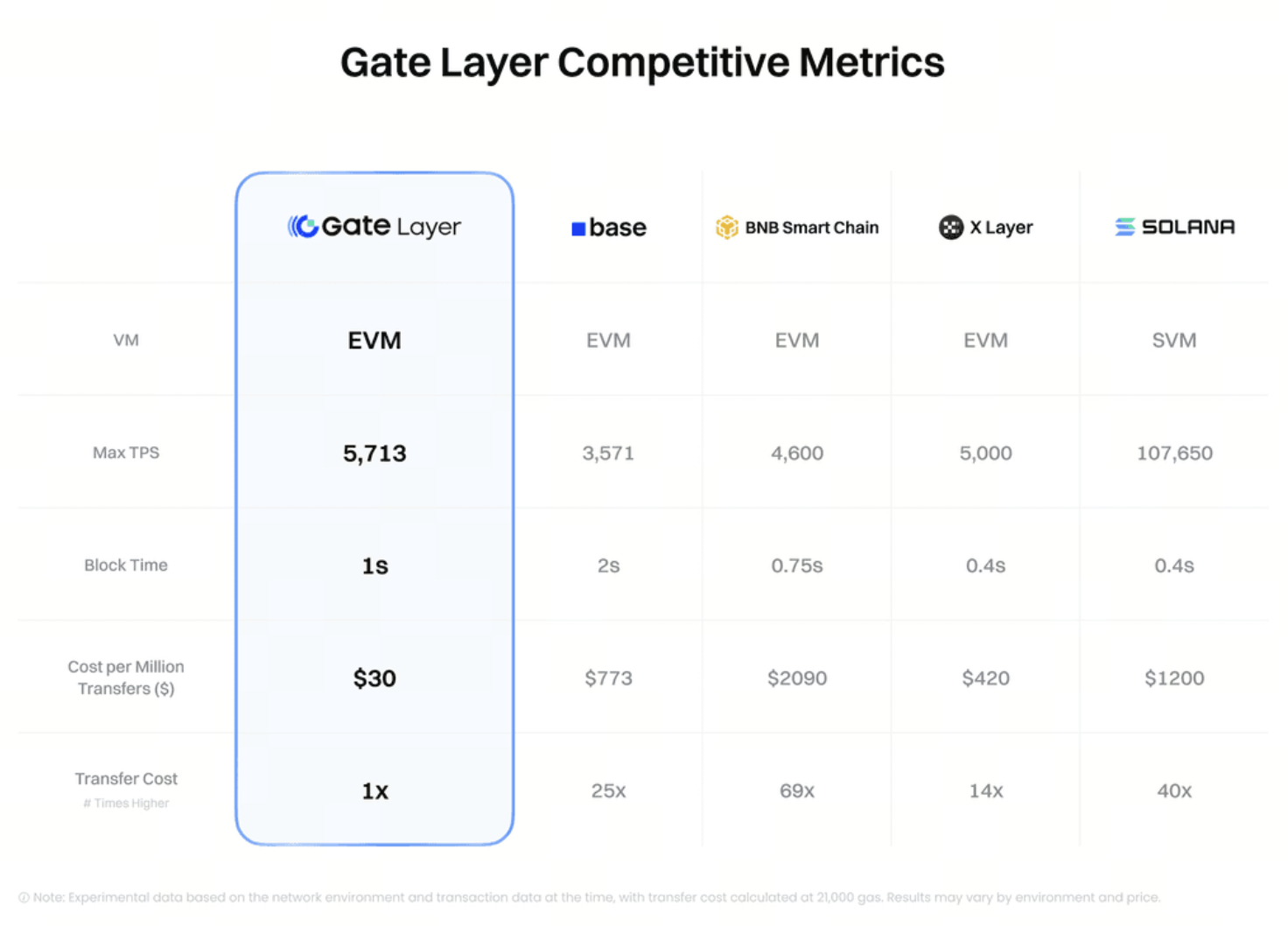Gate Layer A New Engine Driving Web3 Infrastructure and GT Evolution
Web3 Infrastructure Enters a New Stage
As blockchain adoption accelerates, infrastructure efficiency and cost have become pivotal for ecosystem growth. Gate has recently launched Gate Layer, integrating a high-performance Layer 2 network with an upgraded GT token economy. This delivers a secure, seamless, and low-cost Web3 experience and unlocks greater opportunities for developers and users alike.
Gate Layer: High-Performance Layer 2 Solution
Gate Layer is built on the OP Stack architecture, using Gate Chain as its settlement layer. It offers full EVM compatibility, enabling developers to easily migrate existing DApps and quickly access the Web3 market.
Key Features
- Comprehensive EVM Compatibility: Supports mainstream Ethereum tools and applications.
- Dual Security Architecture: Network security reinforced by Gate Chain mainnet and GT staking.
- High Throughput: Up to 5,700 TPS with an average block time of just 1 second.
- Transaction fees are substantially lower than those of other leading Layer 2 blockchains.
- Cross-Chain Ecosystem: Built-in LayerZero enables seamless interoperability with Ethereum (ETH), Binance Smart Chain (BSC), Polygon, and more.
Cost Efficiency
Processing one million transactions on Gate Layer costs approximately $30—dramatically lower than Base ($700), BSC ($2,000), and Solana ($1,000). This cost efficiency supports large-scale applications.

Ecosystem Development for Diverse Applications
Gate Layer is not only a technical Layer 2 chain but also an application incubation platform. Upcoming launches include:
Perp: Provides substantial liquidity and a streamlined user experience as a decentralized perpetual contract platform.
Gate Fun: A tool for token issuance that does not require coding, enabling project teams to launch quickly.
Meme Go: A cross-chain meme coin trading and tracking platform supporting Ethereum (ETH), Binance Smart Chain (BSC), Solana, and other ecosystems.
GT Value Enhancement and New Role
Gate Layer further elevates GT’s role within the ecosystem:
Gas Token: All on-chain operations—smart contracts, NFTs, cross-chain actions—require GT.
Dual Deflationary Model:
- Regular Burns: By Q2 2025, a total of 180,555,112 GT have been burned, representing 60.18% of the total supply.
- On-Chain Burns: The system automatically burns transaction base fees, continually increasing scarcity.
Gate Chain Technology Upgrades
To support larger-scale applications, Gate Chain has upgraded to consensus version v1.20, introducing:
- Support for EIP-4844 blob transactions, boosting data processing efficiency.
- Cancun EVM upgrade, maintaining technical parity with Ethereum.
- Full support for 12 Ethereum Improvement Proposals (EIPs), including EIP-2565 and EIP-2929.
- Optimized RPC interface with added blob transaction support to enhance developer experience.
Conclusion
With Gate Layer’s high-performance infrastructure and upgraded GT token economy, Gate is advancing Web3 infrastructure. By lowering transaction costs, expanding use cases, and enhancing ecosystem sustainability, Gate aims to provide a more efficient, open, and future-ready Web3 environment for developers and users.
Related Articles

Pi Coin Transaction Guide: How to Transfer to Gate.io

Flare Crypto Explained: What Is Flare Network and Why It Matters in 2025

How to Use a Crypto Whale Tracker: Top Tool Recommendation for 2025 to Follow Whale Moves

2025 BTC Price Prediction: BTC Trend Forecast Based on Technical and Macroeconomic Data

What is N2: An AI-Driven Layer 2 Solution
